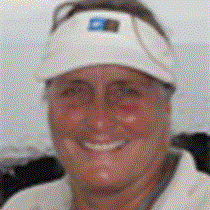Isabela
Today we visited two very different sites on the western coast of the large seahorse-shaped island of Isabela. Isabela is by far the largest of the islands in the Galapagos archipelago; it encompasses more land area than all the rest of the islands if combined. Isabela is made up of five and a half still active volcanoes that are joined together; from north to south they are the half cone of Volcan Ecuador, Volcan Wolf, Volcan Darwin, Volcan Alcedo, Sierra Negra, and Cerro Azul. During the 30+ years that I have been working as a naturalist in Galápagos all of these have erupted except for Volcan Ecuador and Volcan Darwin!
This morning at dawn Captain Pablo Garces anchored the National Geographic Islander in Urbina Bay off the coast at the base of Volcan Alcedo. This is an area that I know very well as I spent over a year and a half living on Alcedo in the early 80’s doing my PhD research on the giant tortoises. Today we disembarked on a black sand beach for a two-mile hike or a shorter three-quarter mile hike. The sun was out but luckily we had some cloud cover from time to time and a welcome breeze.
Urbina Bay was uplifted in 1954 and over 50 years later one still finds evidence that the ocean once covered the trail where we hiked. The long hikers passed several huge coral heads that are now high and dry and slowly disintegrating in the hot sun. There were tube worms and other marine life forms encrusted on the lava rocks a half-mile inland, and we found the original beach with its rounded lava pebbles and sand.
While the uplift and geology was of interest to us, what was most fun this morning was finding our first giant tortoises in Galapagos! We all saw between five and 11 and took countless pictures of them—some were resting, others walking down the trail and one pair copulating. They were of all sizes/ages, too—one small one no more than 12-15 years old and the big amorous male was probably approaching a century in age.
We also encountered, admired, and photographed nearly a dozen large, brightly colored land iguanas, and we saw several species of Darwin finches, the Galápagos mockingbird, Galápagos hawks, and a shy dark-billed cuckoo. Back at the beach we took a refreshing swim and body surfed on the waves before heading back to the ship for lunch and siesta.
We had a choice of afternoon outings and could do two: some of us snorkeled, others kayaked, hiked, and took a panga ride along the coast. The water was cooler this afternoon but no one complained. After all, it is not every day that one gets a chance to snorkel with penguins! We also saw many sea turtles, rays, a horn shark, and sea lions. The kayakers, escorted by Greg, paddled with the wind and current and explored far down the southern coast passing sea lions and sea turtles, marine iguanas, and an occasional penguin or cormorant. Those who accompanied Maximo and me on the Zodiac ride also enjoyed these same creatures, plus we found a small group of the rare Galápagos martin and watched a sea lion tear a fish apart so he could swallow it.
Those who joined Sofia and Jason for the hike set a fast pace and circled the crater rim of Darwin’s crater lake and climbed to the base of Darwin Volcano where they had lovely views from on high. Everyone returned to the ship as the sunset, and I entertained them with photos and the story of my experiences living on Alcedo 30 years ago. The Captain hauled up our anchor and we headed north back around Isabela Island to continue our trip in the central islands of the islas encantadas.




